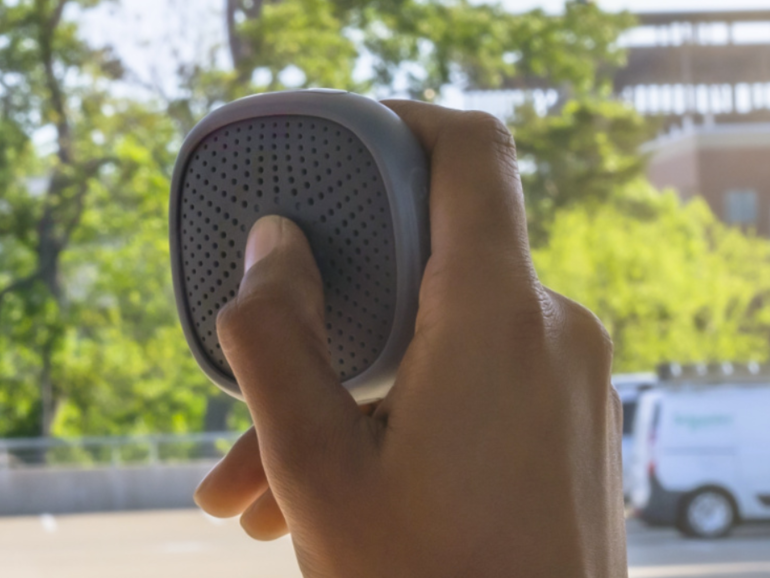While the leading edge of smartphone designs aim to expand viewing area for handheld or even desktop usage, sometimes the combination of big touchscreens and standard cellular and Wi-Fi support isn’t up to the task. This can be especially true in highly mobile or remote environments. A trio of products can offer solutions for more spontaneous group conversations in the field or help a smartphone when it’s far afield from a cell site.
RELAY+
Following major consolidation in the US cellular market, Republic Wireless has been exploring new ways for customers to engage with its cellular network. A few months ago, it teamed up with Gblah to introduce a home VoIP solution that is tied to a customer’s cellular phone number. Now, it is rolling out the second generation of its portable speakerphone, Relay.
The first Relay device was aimed squarely at kids as an alternative to bulky and complicated location-tracking smartwatches. While Republic says that business is chugging along, it saw the broader potential of the device as requests for orders of 50 or more units started coming in, signaling interest from larger organizations for frontline workers for which a smartphone was a poor fit for reasons ranging from the appearances of staff twiddling away on their screens to a fragility.
In some ways, a modern-day version of the push-to-talk devices once synonymous with Nextel, the new Relay+ is smaller but Republic claims it is just as durable and includes a more powerful processor and longer battery life. A cloud-based management system allows administrators to assign groups of users that can communicate; an app also lets those without the device hop in on the conversations. Relay+ also includes a panic button feature that users can activate by pressing the device’s main button five times.
MILO
Like the Relay+, Milo is a small voice-driven device intended to streamline group communication, especially outdoors. But with its Kickstarter campaign filled with footage of people having a better time than you as they surf, ski, and bike, it’s more focused on casual recreation than emergency response. Its developer sees it as just the thing for a time in which even more of our in-person connections have had to take place both outdoors and at a distance.
In contrast to the Relay+, which can use either Wi-Fi or cellular connections, Milo employs its own AI-driven mesh network, six microphones, and noise cancelation algorithms to create a hands-free experience. The campaign also touts its work on Milo’s speakers, but the device also supports Bluetooth headsets. Company CEO Peter Celinski explains that, by design, the default range is not as long as those of products like goTenna, which is designed for asynchronous message sending, as it wanted to ensure high-quality voice conversations. If the Relay+ is the puck-like reinvention of the Nextel phone, Milo is a modern spin on Family Radio Service walkie-talkies like the Motorola Talkabout line.
Milo’s Kickstarter campaign is set to end today. and the company expects to deliver the product to backers next month. A handful of two-pack Milos are still left at $319.
SATPAQ
Satellite communication is the communication of last resort, a potential lifesaver for the adventurous who wander far beyond the reach of cellular networks. For years, satellite communication products such as those in the Spot line have served as a lifeline for such spirits, but they aren’t as well suited to the weekend warrior since they require a monthly fee. By tapping into geostationary satellites as opposed to Low Earth Orbit satellites, Higher Ground’s SatPaq enables the sending of text messages on a pay-as-you-go basis. SatPaq is available for $379 and MessagePaqs — bundles of prepaid text messages — range from $55 for 150 messages (37 cents per message) to $1,750 for 10,0000 messages (17.5 cents per message).
PREVIOUS AND RELATED COVERAGE
Smartphones undergo major changes to reach new age groups
With smartphone penetration across many age groups reaching saturation, some companies are developing smart communication devices aimed at young kids and older seniors. Changes can vary from an interface redesign to creating a new form factor.
goTenna allows smartphones to text and share locations, without Wi-Fi or cell coverage
If you find yourself off-grid or in a difficult situation like another Hurricane Sandy, the goTenna device could be just what you need.



